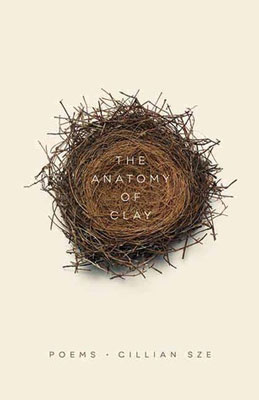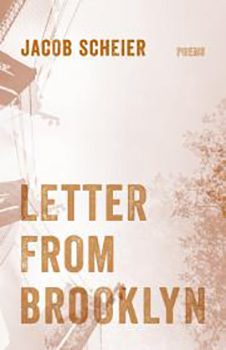 Book: Anatomy of Clay
Book: Anatomy of Clay
Author: Gillian Sze
“It’s ordinary to love the beautiful, but it’s beautiful to love the ordinary.”
– Anonymous
Have you ever leafed through a stack of New Yorker issues just to check out what kind of poetry they publish? Did you conclude that the point was to be just as pointless as possible while still sounding eloquent and perceptive?
If so, join the club. In spite of adoring everything else about The New Yorker, the Mindful Bard has often confessed a dislike for imagist poetry (poems comprised of a succession of images with little if any reference to a message), in part because of the effort required to decipher dense imagery that, in the end as often as not, signifies nothing, and in part because it’s still such a fixture of the best mainstream magazines. Which is why poetry rich in metaphor, meaning, and wordplay is such a breath of fresh air.
Enter Gillian Sze, born in Winnipeg and now living in Montreal, whose poems are so spare, so jewel-like, so vivid, and so enlightening that you think it must be painful to walk around with that level of sensitivity to ordinary things.
In her poetic landscape a line of streetlights encircles a city’s wrist, buildings in a drab neighborhood are like old men with sagging shoulders, and after a doctor’s appointment a couple is disappointed to find that what they thought were a group of storks is actually herons (one might assume the doctor had delivered unwanted news).
And it’s not just the metaphors. When you pay attention to the rhythm of the lines they turn out to be deeply musical. This is easy to miss; Sze’s rhythm is so in keeping with the natural rhythms of the best human speech that they’d fit well in a classic film, spoken in the melodious accents of a gifted thespian.
In the meaning department Sze draws out the poignancy and significance of the most mundane scenes and events. She empathizes deeply with the people she observes, creating backstories for whatever simple or bizarre behavior they’re engaged in at the moment.
There’s also an overarching story; what emerges from within all the pithy observations is the tale of a young woman who lives a self-examined life but who hasn’t yet received a return on her investment in it. There’s an organic salience to her loneliness, expressed in images you can almost smell. We don’t know if this is the author or someone else?that’s how acute is Sze’s empathy?but this story gives scope to the other observations in the book, painting a sharply detailed picture of the great human stew of despairs and joys.
Anatomy of Clay manifests eight of the Mindful Bard’s criteria for books well worth reading.
– It’s authentic, original, and delightful.
– It poses and admirably responds to questions that have a direct bearing on my view of existence.
– It provides respite from a sick and cruel world, a respite enabling me to renew myself for a return to mindful artistic endeavor.
– It is about attainment of the true self.
– It inspires an awareness of the sanctity of creation.
– It displays an engagement with and compassionate response to suffering.
– It makes me want to be a better artist.
– It makes me appreciate that life is a complex and rare phenomena, making living a unique opportunity.

